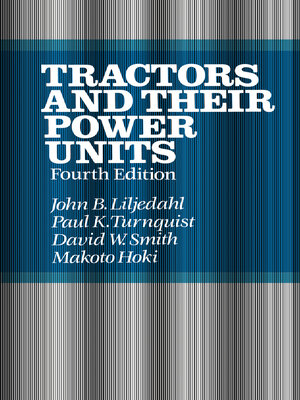
Sign up to save your library
With an OverDrive account, you can save your favorite libraries for at-a-glance information about availability. Find out more about OverDrive accounts.
Find this title in Libby, the library reading app by OverDrive.



Search for a digital library with this title
Title found at these libraries:
| Library Name | Distance |
|---|---|
| Loading... |
At the time of the writing of the fourth edirion of this textbook, the agricultural economy in the United States and Canada was depressed. The prices paid to farmers for their grain crops were very low, and consequently most farmers in North America could not afford to buy a new tractor when needed; there fore, the sales of tractors and other farm machines were much below normal. The farmer who was the victim of the depressed economy was forced to "make do." Instead of purchasing a new tractor when the old one needed to be replaced, the farmer usually purchased a used or second-hand tractor or repaired the old one. In a strict sense, tractors usually do not wear out; instead, they become obsolete. The farmer who owns an obsolete tractor would prefer to replace it with one having more power, more speeds, more conveniences, a better hydraulic system, lower operating cost, or all of the above. But farmers in the United States, Canada, and other industrial nations will continue to want to purchase tractors that have all of the features, in cluding microprocessors, found on other vehicles.







